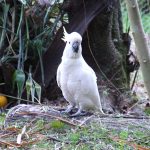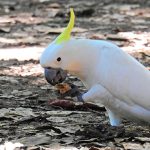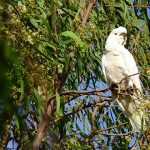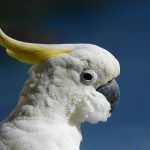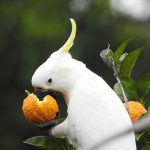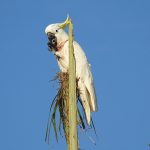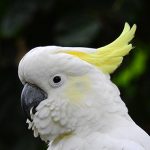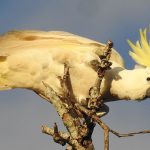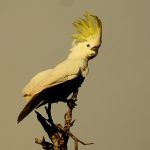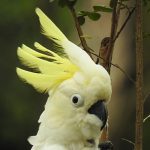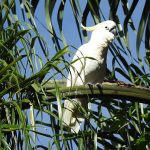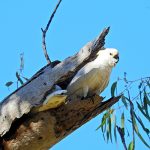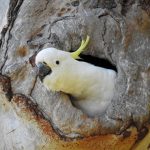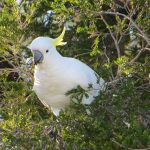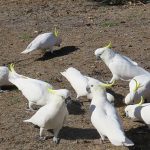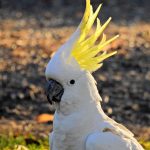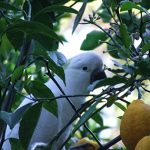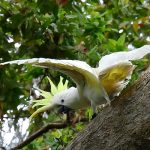SULPHUR-CRESTED COCKATOO
Australia’s Charismatic Avian Icon
With a flash of white wings and a blaze of radiant yellow, the Sulphur-crested Cockatoo sweeps across the Australian sky. These intelligent and expressive birds are not only a delight to observe but also play an important role in their natural environments.
Physical Features & Name
| Feature | Description |
|---|---|
| Size | Large parrot, up to 50 cm in length |
| Plumage | Predominantly white |
| Crest | Bright yellow (“sulphur”) feathers on the head |
| Weight | Approximately 800–1,000 grams |
The name Sulphur-crested refers to the bold yellow plume rising elegantly atop their heads, which can be raised into a striking display or smoothed flat, reflecting the bird’s mood—whether startled, curious, or excited.
Habitat & Distribution
Sulphur-crested cockatoos are highly adaptable and can be found in:
- Eastern and northern regions of Australia: Open forests, woodlands, rainforests, and even city parks.
- Indonesia and Papua New Guinea: Similar forested and lightly wooded habitats.
Multi-Sensory Setting
Imagine standing beneath towering eucalyptus trees as the morning sun filters through the leaves. Suddenly, a rolling thunder of harsh, joyous calls sweeps through the air, and a flock of white cockatoos descends in a flurry, their calls echoing like laughter on the wind.
Diet and Behaviour
Omnivorous and Opportunistic:
- Seeds and nuts: Cracked open with powerful, hooked beaks
- Fruits and flowers: Stripped with skilled dexterity
- Occasional insects and plant matter
- In urban areas: Known to search for food scraps or raid fruit trees
Social Nature
Sulphur-crested cockatoos thrive in the company of others, often forming large, noisy flocks. They communicate through screeches that can be heard a kilometre away—nature’s own alarm clocks!
Visual & Auditory Imagery
Picture a group of cockatoos sidling along a branch, their talons gripping rough bark, feathers ruffled in a breeze, yellow crests flaring as they greet one another, while their jubilant calls ring out across the bush.
Intelligence & Problem-Solving
Among parrots, these cockatoos are renowned for their curiosity and cleverness:
- Use tools to access food
- Figure out complex latches and barriers
- Copy sounds and even words from humans
Their lively curiosity lends an air of playfulness to almost every movement, from hanging upside down to manipulating objects with nimble claws.
Conservation and Coexistence
Although their populations are largely stable, Sulphur-crested cockatoos face challenges:
- Habitat loss from urban development and agriculture
- Illegal pet trade reducing their numbers in the wild
Conservation Insight:
These striking birds are not just decorative presence in our landscapes; they are vital partners in Australia’s ecosystem. By dispersing seeds and aerating soil as they forage, they contribute to the health of forests and woodlands.
Emotional Connection & Responsible Appreciation
To witness a Sulphur-crested cockatoo in its natural home is to experience the wild heart of Australia—unpredictable, brilliant, and full of life. While their playful charm often tempts people to treat them as pets, it is crucial to respect their wildness and remember that their true brilliance shines brightest in the open skies and towering trees they call home.
Key Takeaways
- Sulphur-crested cockatoos are much-loved, charismatic birds, instantly recognisable by their white feathers and vivid yellow crests.
- They display remarkable intelligence and social behaviour.
- Their continued survival depends on the health of natural habitats and thoughtful coexistence with humans.
- Each sighting is a reminder of the amazing biodiversity found in Australia and nearby regions, encouraging us all to cherish and protect these unique creatures.
When you next hear the jubilant chorus of cockatoos overhead, pause for a moment. Listen to their story and remember the deep, connected wildness that links us all.

